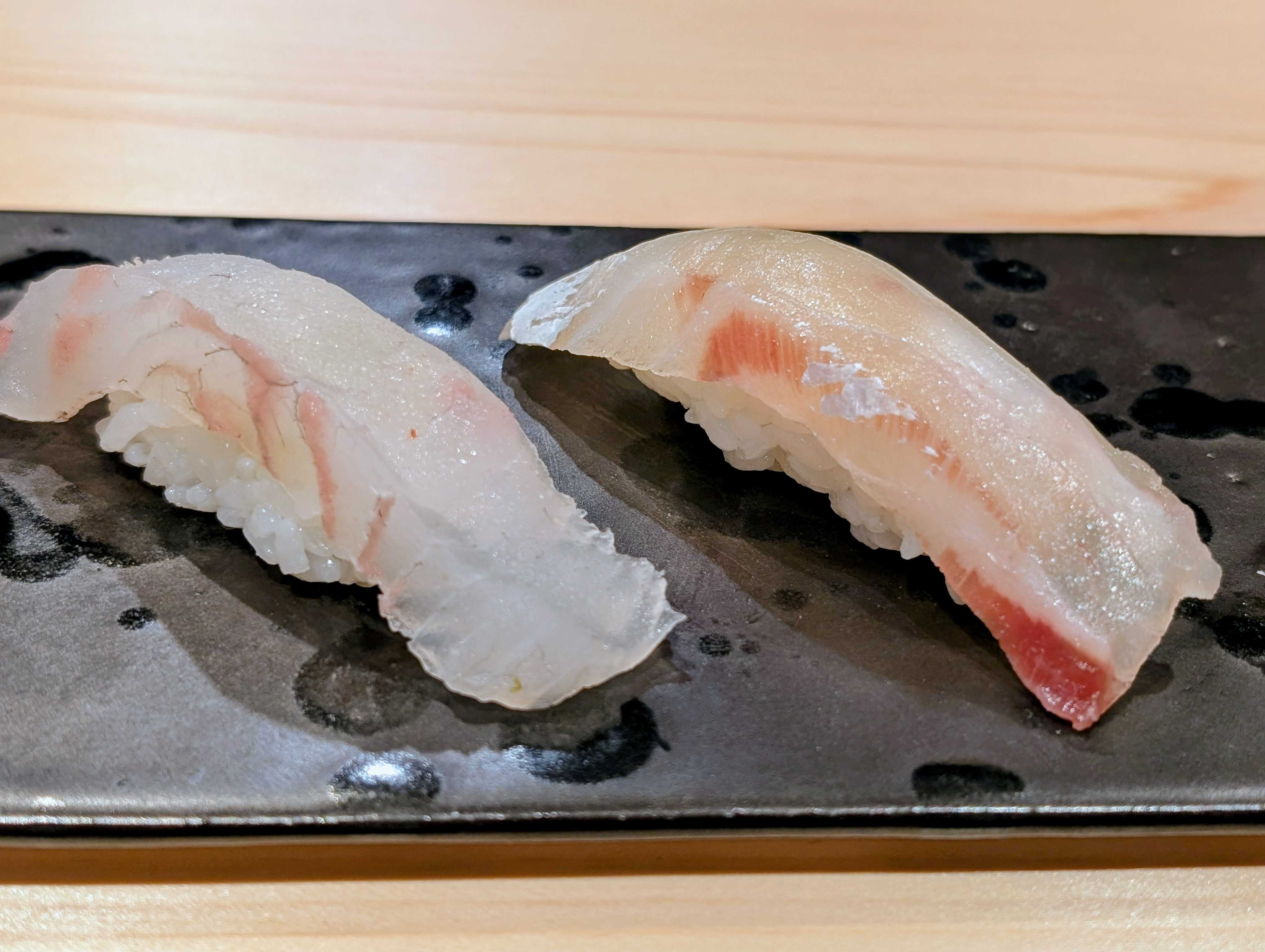
Hello, I’m Fujito, a sushi chef at REONA Sushi Tokyo.
Located in Kanda, one of Tokyo’s historic cultural centers, REONA offers more than just delicious sushi—we provide an immersive experience where guests learn about the traditions, techniques, and stories behind each piece. On our official website as well, we explain as much as possible through text, though the best way to understand is, of course, by visiting and tasting while engaging with our team.
Today, I’d like to introduce you to Hirame—flounder—a staple of Edomae-style sushi. With its elegant texture, refined flavor, and precise preparation methods, Hirame is a white fish that many sushi chefs handle with the utmost care.
Its flattened shape requires a unique approach, from the way it’s cut to how it’s aged. Every detail, from selection to curing, reveals the depth of a sushi chef’s craftsmanship.
In this article, I’ll share the essence of working with Hirame here at REONA, and how this iconic white fish embodies the art of Edomae sushi. I especially invite you to experience the transformation of its flavor through kombujime (kelp curing), a traditional technique that dramatically changes its character when compared with raw Hirame.
Hirame is a premium white fish harvested in Japanese coastal waters, and it holds a firmly established position in sushi culture.
Its appearance is flat and somewhat unusual, but it offers a rare balance of firmness and refined umami—making it an ideal fish for sushi.
In Edomae-style sushi, preparing Hirame is considered a benchmark for a chef’s skill. In winter, when the fish fattens, its flavor becomes even more concentrated, making this its prime season.
While it’s often compared to karei (another flatfish), Hirame surpasses it both in flavor and market value. A particularly prized part of Hirame is the engawa—the delicate flesh near the fin—highly sought after by connoisseurs.
Hirame is delicious—but not without its challenges.
Its firm texture means that if eaten too fresh, it can feel overly chewy and hard to swallow. When served immediately after being caught, Hirame tends to separate from the rice and feels slightly watery on the palate.
In other words, freshness alone does not guarantee superior sushi quality—especially when it comes to Hirame.
That’s where aging (jukusei) comes into play. Inherited from traditional Edomae techniques, aging condenses the umami over 1–2 days under precisely controlled temperature and humidity.
It takes years of experience to master the timing. I can say from personal experience that it took me quite a while to grasp the subtle cues of when the fish is at its best.
When preparing Hirame for sushi, the cutting technique is essential.
Too thick, and the texture overpowers the rice. Too thin, and the flavor becomes faint and unbalanced. The ideal thickness is one where the fish and rice melt together in perfect harmony inside the mouth.
Sometimes, we even add fine lattice incisions, invisible to the naked eye, to smooth the texture. This enhances the fish’s natural elegance and ensures a refined experience with every bite.
Aged Hirame is already flavorful, but we take it a step further with kombujime, one of the most time-honored Edomae techniques.
Kombujime involves wrapping slices of fish in dried kombu (kelp), which is rich in glutamic acid—a natural umami component.
The kelp not only transfers its umami to the fish, but also draws out excess moisture. As a result, the fish becomes more concentrated in flavor and gains improved shelf life.
Back in the early days of sushi, refrigeration didn’t exist. Kombujime was a brilliant solution—by reducing the fish’s moisture, spoilage was delayed, and the fish was simultaneously aged.
It’s a testament to the wisdom of traditional sushi masters.
We also select our kelp with care. Not all kelp is suited for curing. At REONA, we choose flat-shaped kelp with subtle aroma and strong umami—perfect for elevating Hirame without overpowering it.
After all this talk about Hirame, you might be wondering—does aging or kombujime really change the flavor that much?
At REONA, you won’t have to take our word for it—you can taste the difference for yourself.
We offer side-by-side tastings of both raw Hirame and kombujime-cured Hirame as part of our omakase course. It’s a rare opportunity to experience how drastically the flavor and texture of the same fish can change through Edomae techniques.
We also show you the actual kelp-wrapped Hirame so you can visually understand the curing process.
This is more than just a meal—it’s an experience of learning and surprise.
At REONA, we always have English-speaking staff available to explain not only Hirame, but the full range of ingredients and techniques used in your sushi course.
As for me—Fujito—I also love engaging with our guests. If you’re curious about our techniques or the thinking behind our approach, I’d be happy to answer your questions.
You’re even welcome to step behind the counter after your meal for a commemorative photo with our chefs—making your visit a lasting memory.
So, if you’re seeking a sushi experience that engages both your palate and your curiosity, we invite you to join us in Kanda for a deep dive into Hirame and the world of Edomae sushi.
Of course, Hirame is just one part of the journey. Our omakase features a variety of exquisite ingredients including tuna, uni, anago, scallops, and more—each presented with care and context.
We look forward to welcoming you to REONA!